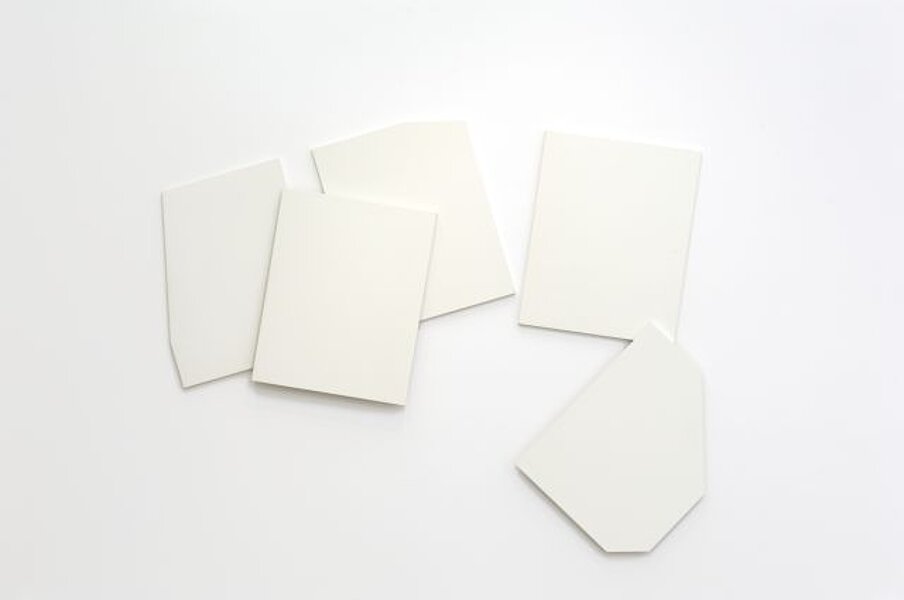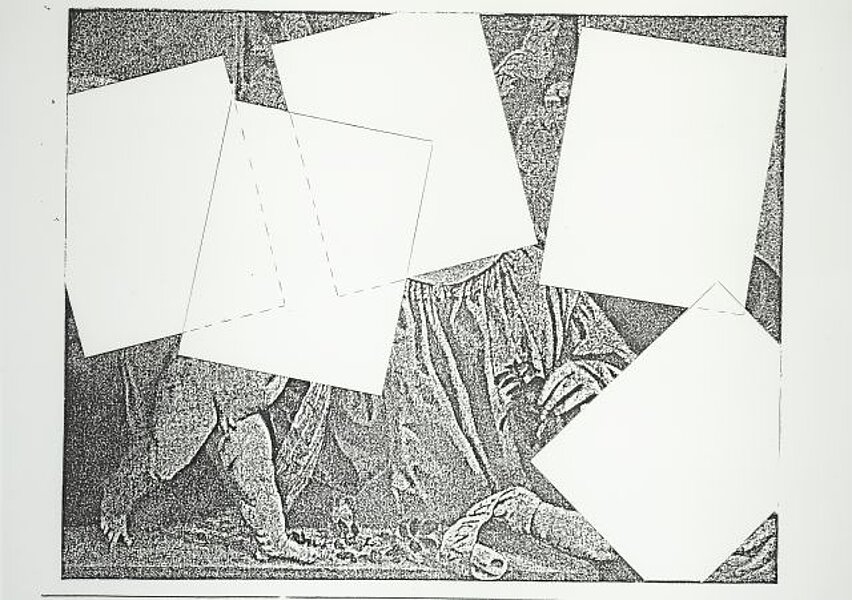
Morellet, François
Défiguration (nach Tizians Kirschenmadonna)
Défiguration (after Tizian‘s Madonna of the Cherries)
1989
| Object description | Primed canvases on wooden boards |
|---|---|
| Object category | graphics |
| Material |
Transparency:
plastic
|
| Technique | |
| Dimensions |
Crate:
weight: 118 kg
Object:
height: 250 cm,
width: 210 cm,
depth: 4,5 cm,
height: 21 cm,
width: 29,7 cm
|
| Year of acquisition | 2007 |
| Inventory number | MB 17/0 |
| Creditline | Sammlung Dieter und Gertraud Bogner im mumok |
| Rights reference | Bildrecht, Wien |
| Further information about the person | Morellet, François [GND] | Morellet, François [ULAN] |
| Literature | Leidenschaftlich Exakt.Sammlung Dieter und Gertraud Bogner im mumok |
Five white pictures on the wall—arranged as if dancing. There are overlaps, and three of the canvases are cut off. A look at the outer edges shows that there is some kind of invisible border here, a frame that defines the scope within which the five white canvases are placed. Morellet made this work for the collectors Dieter and Gertraud Bogner. Here, as in each work in the “Defigurations” series, he creates his own art by drawing on the model of an artwork that is kept in the hometown of his buyer. Morellet made several suggestions for the Bogners, and they decided for Titian’s famous “Madonna of the Cherries,” painted between 1516 and 1518 and now in Vienna’s Kunsthistorisches Museum. Morellet replaced all the heads on Titian’s devotional picture—the Madonna herself, the baby Jesus, John the Baptist as a boy, and two male saints in the background—with white fields. Titian‘s complex composition and the interaction of his characters is now shown in the form of empty white spaces and is quite literally DE-FIGURALIZED. Standing before Morellet’s work, we can ourselves decide if we want to imagine Titian‘s painting as its backdrop, or if we prefer to see the white canvases as independent forms that relate to and communicate with each other. Geometrical abstraction is neither really pure or autonomous, and is not divorced from its own history. Here it is based on an old master and a tradition that modernism was all too eager to disown. François Morellet comments as follows on his playful defiguration: “I love the strictness of geometry, but I love it even more to ignore all strictness.”
© mumok – museum moderner kunst stiftung ludwig wien

